Last Updated on September 28, 2022 by
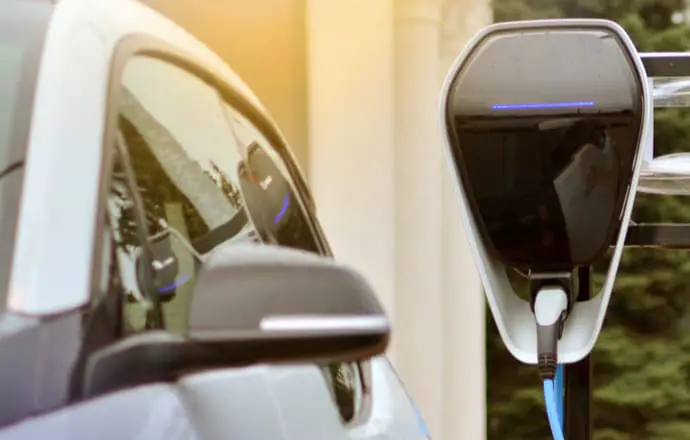
Home EV chargers are ideal to have installed at your property if you don’t want to have to travel to a public charging point every time you want to charge your EV. Although the public charging station infrastructure is expanding rapidly, the convenience of being able to control your own charging times is very desirable, providing you have the budget and are willing to go through the hassle of getting one installed at your home.
You may need to have a professional install your charging unit at home, but there are plenty of trusted services out there to choose from. The big choice is choosing the right home EV charging unit for your EV from the sometimes confusing different model types out there. We’ve listed our top 5 EV home chargers to consider and have tried to simplify choosing a unit with the things to look out for when buying one for your EV and property.
Best Home EV Chargers in the UK Reviews
|
Image |
Charger |
Power Output |
Display |
Price |
|---|---|---|---|---|
 |
Top Pick |
32 amp/7.2 kw |
No |
|
 |
32 amp/7.68 kw |
Yes |
||
 |
32 amp/7 kw |
No |
||
 |
32 amp/7.2 kw |
No |
||
 |
32 amp/22 kw |
No |
#1. QUBEV – EV Charging Unit

The QUBEV EV Charging Unit is a single-phase, mode-three charger. It delivers a maximum power output of 7.2 kW (32A), which is the most that a typical single-phase electrical outlet can provide.
The unit measures 20 x 15 x 10 centimetres, which is about the same width and height as A4 printing paper. It has a simple, rectangular design.
An amp selector is on the side of the unit and the front panel has a socket and an LED indicator. The socket supports the standard type 2 charging cables.
The unit does not have an LCD screen or app for viewing the charging progress or electrical usage. The LED indicator lets you know when the charging is complete.
Along with the charging unit, you receive an installation kit for mounting the unit on a wall. The kit includes four screws, wall plugs, and washers. The provided fixing template allows you to easily align the screw holes and mount the charging unit.
The QUBEV charger should work with any electric vehicle (EV) when using the correct charging cable. If you drive a type 1 vehicle, you need a type 1 to type 2 cable or adapter.
The unit itself is designed for indoor or outdoor installation. It is made from durable plastic with an IP65 waterproof rating. The internal circuitry includes protection against charging issues, such as over-voltage and under-voltage.
The QUBEV charger was recently updated. This is the 18th edition, which includes a built-in 6 mA DC sensitive fault protection circuit to eliminate the need for type B residual current device (RCD).
Pros
- One of the most affordable charging stations
- Simple, minimalist design
- Easy to install using the provided fixing template
Cons
- Does not have a display or app for monitoring charging
#2. Morec EV Charging Station 25A Type 2

The Morec EV Charger offers 5.5 kW (25A) of maximum charging power. It is a single-phase charger, allowing you to connect it to a standard single-phase electrical line. It does not support fast charging but should work with any electric vehicle.
This unit costs a little more compared to some of the other options. However, it is a complete package, as it comes with everything needed to charge your EV, including a 1.5-metre power lead and a 6.1-metre charging cable.
The design is sleek, featuring an aluminium alloy case and a black PC alloy panel. The front panel has a large LCD screen and an LED indicator. The LCD shows the state of charge, including the current, voltage, and temperature.
The bottom of the box has two ports. One port is for the electrical lines running to the power source and the other is for the provided charging cable. It also has a tab that supports a lock for securing the lid and preventing tampering. However, you must purchase a lock separately.
The installation process is relatively easy. The package comes with screws and anchors for mounting it to a pole or wall. You also get a cable holder for the 6.1-metre charging cable. The provided holder is a simple bracket with a socket for securing the nozzle from the cable.
The Morec EV Charging Unit is suited for indoor or outdoor installation. The aluminium case should shield the internal circuitry from moisture when installed outdoors. The ports are also located on the bottom, which protects them from rain.
Pros
- Front panel has a large LCD screen
- Includes a 6.1-metre charging cable
- Bottom of the box has a tab for keeping it locked
Cons
- Does not support fast charging
#3. Project EV Smart Car Charger

The Project EV Smart Electric Vehicle Car Charger offers a good overall value thanks to its reasonable price and standard features. This charger has a maximum output of 7.3 kW (32A), which is common for a single-phase type-2 charging station.
The charger is equipped with many additional standard details, including over-voltage and under-voltage protection, short circuit protection, and an emergency stop button. The socket and the emergency stop button are on the right side of the charging unit. It has the standard IEC 62196-2 socket, which works with any type-2 electric vehicle or a type-1 EV with a charging adapter.
As with many of the latest charging units, this charger is 18th Edition Compliant, which means that it has a built-in residual current device (RCD). It is easy to install indoors or outdoors and is rated to operate in temperatures as low as -20 degrees Celsius.
The box is compact, measuring 24 x 38 x 14.5 centimetres. It has a metal casing and a black/grey two-tone front panel.
The panel does not include a display. It simply has a logo and an illustration of a vehicle. However, the panel is backlit and lights up when charging.
To view the current state of the battery, you need to download and install a mobile app provided by the manufacturer. The app allows you to remotely monitor and control the charging of your vehicle.
For example, you can set times for charging the car at different electricity rates or remotely turn the charger on or off.
The app increases the usefulness of the charging unit. It can even monitor multiple charging points from a single account or prevent unauthorised individuals from using the charger.
Pros
- The mobile app provides remote access to the charger
- The design is compact and easy to install
- Includes a large emergency stop button
Cons
- The variety of options in the app may confuse some EV owners
#4. Rolec EV OneStop Simple Charging Unit

The EV OneStop Simple Charging Unit delivers the standard charging speed, with a maximum output of 7.2 kW (32A). The single-phase unit also has the standard type 2 socket (IEC 62196) and supports mode-3 fast charging.
The design of this charging unit is unique. It does not have a display or a compatible app for monitoring charging. It has an LED status indicator and two large access windows on the front panel.
The upper access window allows you to easily switch out the RCBO circuit breaker without having to open the unit. The lower access window includes the charging socket.
The lack of an electricity meter or display may disappoint some individuals. However, the manufacturer sells an optional Class 1 accurate MID-approved kWh meter.
Users may also choose to remotely connect the charger using third-party applications. The charging unit supports optional Smart charging options, including GPRS, Wi-Fi, Ethernet, and back-office connectivity.
The housing is fully IP65 weatherproof to shield the components from rain and severe weather. It can be installed indoors or outdoors without the risk of damaging the unit. It is a durable charger made with high-quality materials.
Overall, the EV OneStop Simple EV Charging Unit offers a safe, simple way to charge your EV at home. As with most chargers, you get everything you need to install the unit, other than the charging cable. The back of the charger has six slots for mounting it on a wall.
Pros
- The front panel provides convenient access to the RCBO
- The durable, waterproof design can withstand severe weather
- Supports fast charging for compatible electric vehicles
Cons
- Does not include a display or app for monitoring the charger
#5. Wallbox Pulsar Charger for Electric Cars

The Wallbox Pulsar Charger is a complete EV charging solution. It includes the charging station, charging cable, and cable holder, along with all installation hardware. The provided cable is five metres long and fits snugly in the wall-mounted holder.
The charging station features one of the most compact designs, measuring 16.6 x 16.3 x 8.2 centimetres. The slim white box takes up minimal space yet provides more power.
Unlike the lower-cost options, the Pulsar Charger is a three-phase charging unit instead of a single-phase unit. It requires a grounded connection and delivers a maximum power output of 22 kW (32A).
Installation remains easy. The unit comes with screws for mounting to a wall and allows you to adjust the power. It even includes protection to prevent overloading your electrical installation, making it suitable for any location, from private garages to community parking.
The Wallbox Pulsar Charger also features Wi-Fi connectivity. The charger connects to the internet, allowing you to track and monitor battery recharging via a mobile app.
The app is available on Android and iOS devices and increases the functionality of the charger. You can view the current charge status, adjust the power output, set charging times, and monitor your charging history and electrical use. Along with monitoring activity, you can set a security lock, preventing anyone else from using the charger.
You may also choose to charge your vehicle without using the app. The front of the unit has an LED halo that changes colour to indicate the charger status.
Pros
- Provides remote access to data via the mobile app
- Offers 22 kW maximum power (three phases)
- Includes a five-metre cable and plug holder
Cons
- Costs a little more compared to other charging stations
EV Home Charging Unit Buying Considerations
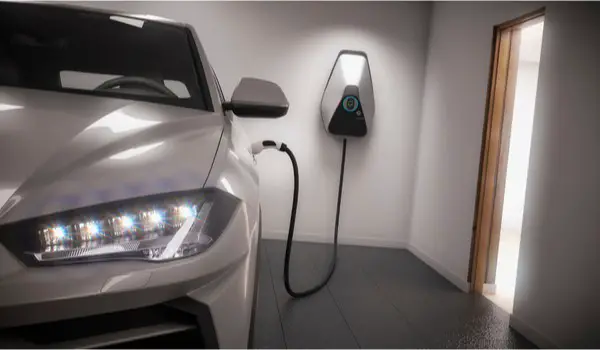
Different Levels of EV Charging
However, before we delve into the various features that a typical home EV charger has to offer, it’s important to understand the two most common types of home charging levels that are available, as this might well impact on which charger you decide to purchase.
Level 1
Level 1 charging, is the basic level of charging and works from a standard 120-volt household outlet. Being a basic unit, it only provides about 4 to 5 miles of range per hour.
For some people, level 1 charging is more than sufficient, as they tend not to drive very far every day, and so they can leave the car plugged in for hours at a time and recharge the energy used that day.
However, with regards to purchasing a Level 1 home charger, you do need to remember that level 1 charging is primarily only applicable in North America, as Europe and the UK together with the rest of the world uses a 220 volt electric supply.
Level 2
Level 2 chargers, work on an electrical supply of 240 volts and recharges a typical EV 4 to 5 times quicker than a basic level 1 charger, and will deliver at a rate of between 12 to 60 miles of range per hour, depending on how much power the charger can supply, and of course how much power the EV can accept.
To give you an idea of what that means, most homes in the UK use 240 volts for appliances like a washing machine and dryer.
If you have the wrong type of charging cable for the charger you want to use, a charging cable adapter can be used so you can charge with a type 1 cable to a type 2 charger and vice-versa.
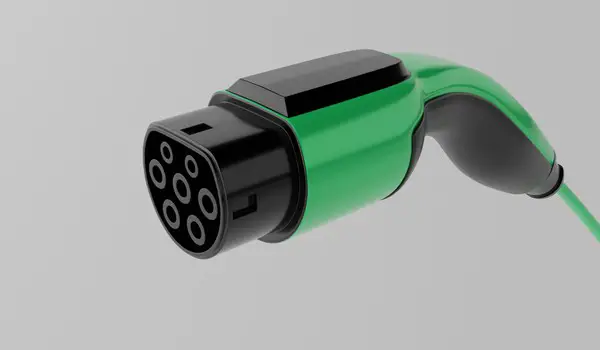
Top Tip: some homes, especially older ones, could have a limited electrical capacity and may not be able to support the new dedicated 240-volt circuit needed for a 240-volt level 2 charger, so it’s always worth having the electrical capacity, professionally checked before you go ahead purchase your new level 2 home EV charger.
Location Inside or Outside
Now that you know which charging level you require, the next thing on our checklist for you to consider is where the charger should be located?
If you have a garage that’s either integral to the house, or as a stand-alone building, and you have the relevant power source, then locating your home EV charger in the garage makes perfect sense both in terms of ease of use and security.
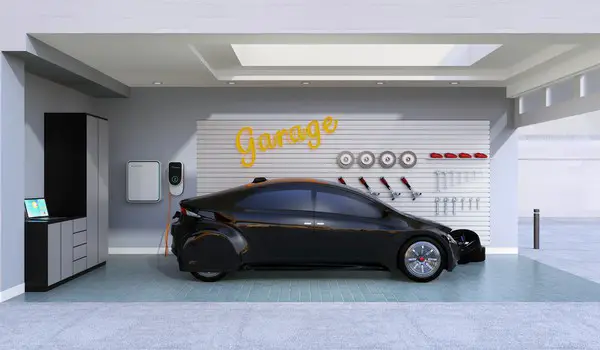
However, if you’re an EV owner who doesn’t have a garage or have the room to keep your car under cover, then should research which home chargers have outdoor functionality and are weatherproof. Again in an instance like this, it’s always worth speaking with a professional installer for more information before you purchase the home EV charger.
Top Tip: If you do need to go with an outside installation, you should look for either a NEMA 4 or the Europe and UK equivalent IP 65 enclosure, either one of these will help protect your charger from the elements and can be easily cleaned. You should also think about purchasing a J1772 connector, this is a universal adapter that plugs into the electric car’s charging port and rests in a holster that protects it from the elements.
Plugged In or Hard Wired
Okay, you know what charging level you’re going for, you’ve decided on where the home EV charger is going to be located, so next on our checklist is to decide if you’re going for plugged in or hardwired charger?
Let’s explain what we mean, a plugged-in home EV charger plugs into a 240-volt wall outlet, just like you do with say your washing machine. Being a mobile unit they are particularly useful if you’re an EV owner who uses the car from two or more locations and wants to have the same home charger at every location.
By comparison, a hardwired EV home charger has a fixed interior, electric connection, as you find on an electric cooker. In other words, the electrical cable comes directly from the fuse box into the charger and is normally the method used in outdoor installations.
Top Tip: If possible, go for a plugged-in home EV charger because while they can be slightly more expensive, they are portable and easier to repair or replace than the hardwired charger.
Smart Charging
As we mentioned back at the start there rapid has been a rapid rise in EV technology and the fact that manufacturers like Jaguar, Porsche, Tesla and others all include an app that allows you to control scheduling, remote starting and reminders etcetera for your car.
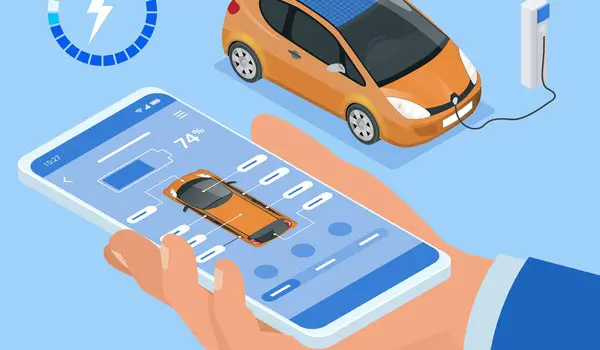
So you might want to consider purchasing a ‘Smart Charger’ with WiFi capability, that allows you to monitor and schedule your EV charging via your intuitive mobile app & web portal so helping you to save time.
Top Tip: While ‘smart charging’ is great and it lets you control everything via your mobile phone, remember you are at the mercy of a Wi-Fi connection. So before you purchase this type of home charger, make sure that your signal will be strong enough in the location where you are considering installing your home EV charger.
Cable Length
The majority of home EV charger manufacturers offer both 16 and 25-foot charging cables, with the longer charging cables usually costing a little more. When deciding which cable length is right for you, imagine where your car will be parked and where the charger will be installed, and then, ask yourself: how far from the charger will the car’s outlet be?
The twenty-five-foot charging cables will give you the convenience of extra mobility and could help you save money on the charger installation if less electrical work and materials are required as a result of buying a longer charging cable.
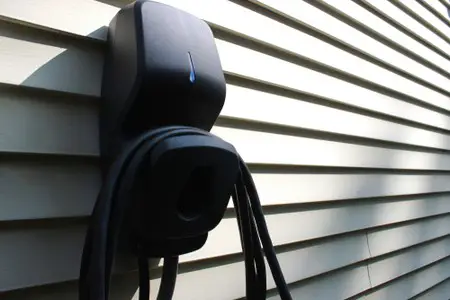
Top Tip: Remember the whole idea of investing in a home EV charger is for the convenience of being able to charge your car, at any time, so if that means spending a little more on a longer cable for the added mobility and ease of use then it’s going to be money well spent.
Installing Your Home EV Charger
When it comes to Installing a home EV charger, it’s all pretty straightforward as they come with a power cable, along with a built-in connector holster, and cable management system which is usually attached below the housing.
However, we would always recommend that you use a professional installer and you take into consideration all the various points that we have mentioned before you purchase your home EV charger.
Final Word
EV is still in its infancy in the UK, but it is expanding at a rapid rate, with more and more home chargers being installed around the country every day. It might look a bit complicated when comparing EV chargers with so many different features, outputs, types etc. But we have absolutely everything you’ll need to consider before purchasing one for your property, with our 5 best home EV charger picks helping you spend the money wisely.
